PROVINCETOWN — Voters at the April 3 annual town meeting will consider a plan to create a 40-foot gap in the town’s West End breakwater, more formally known as the Long Point Dike, in an effort to reverse the destruction of the marsh west of the breakwater.
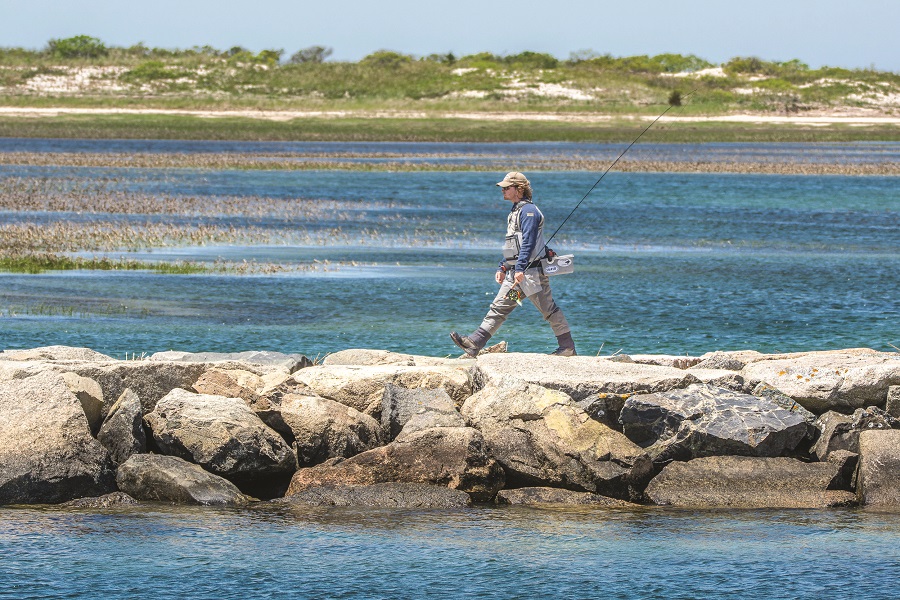
The gap would likely be 10 feet wide at the sandy base of the dike and measure 40 feet across the top of the breach. It would be spanned by a nine-foot-wide concrete bridge to preserve pedestrian access to the full length of the dike and to Long Point at the far end of the 6,150-foot-long structure.
The town meeting article will ask for $120,000 to cover half the cost of a final feasibility report by the U.S. Army Corps of Engineers, which would pay the other 50 percent.
Construction would be funded by a separate vote a year or two from now, according to Provincetown Community Development Director Tim Famulare, and would likely cost the town about $1 million, with the Army Corps providing around $3 million. State grant money could offset some of the town’s share, Famulare said.
The same feasibility study was voted down in April 2017. It has been revived because of the ongoing collapse of the marsh, a 385-acre expanse of tidal flats and cordgrass (Spartina alterniflora) nestled between the dike and Herring Cove Beach. The cordgrass, which glows a striking green in the summer sun and a comforting gold in the fall, is being rapidly consumed by an invasive species, the purple marsh crab (Sesarma reticulatum).
The crabs arrived in the West End marsh sometime after 2008, Cape Cod National Seashore plant biologist Steve Smith told Provincetown’s conservation commission in March 2021. They have long been a threat to marshes farther south on Cape Cod and on Long Island, but their range is now expanding northward, Smith said, possibly due to climate change and a decrease in hard freezes, but also possibly due to overfishing of their primary predators such as striped bass, cunner, and tautog.
These predator fish are entirely absent from the West End marsh, however.
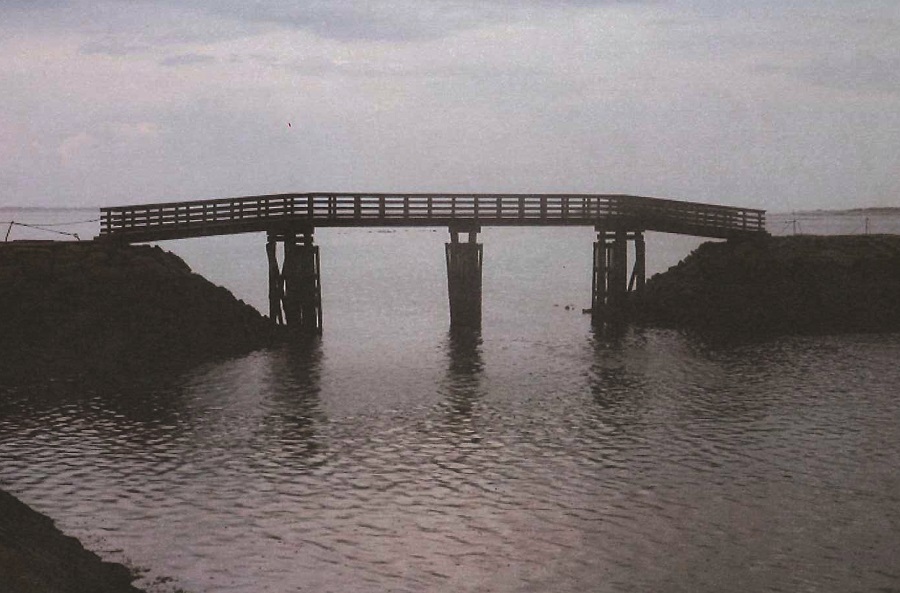
The Long Point Dike is made of boulders that permit water to flow through but block the large fish that feast on purple marsh crabs. Since their arrival in the artificially sheltered marsh, the crab population has exploded, Smith said.
“We have been monitoring this marsh pretty closely since 2003, and we had a healthy, fully vegetated marsh in 2010,” Smith said. It’s anyone’s guess how the Sesarma crabs first got to the marsh, Smith added — their tiny, plankton-size larvae could have floated in or hitched a ride on a bird’s feet or feathers.
A profusion of crab burrows and the first small patches of destroyed cordgrass became visible in 2016, Smith said. Since then, huge areas of cordgrass and the biologically rich peat it creates have been killed and washed away, leaving bare sand behind.
“The rate of deterioration is so rapid, even compared to other marshes that are being impacted by Sesarma crabs,” Smith said. “We’re talking about peat that has built up over 2,000 years, and it washes away in a few hours in a winter storm.”
A Project Revived
The proposal to cut a hole in the Long Point Dike, allowing larger fish and possibly more sediment to find their way into the marsh, actually predates the crab invasion.
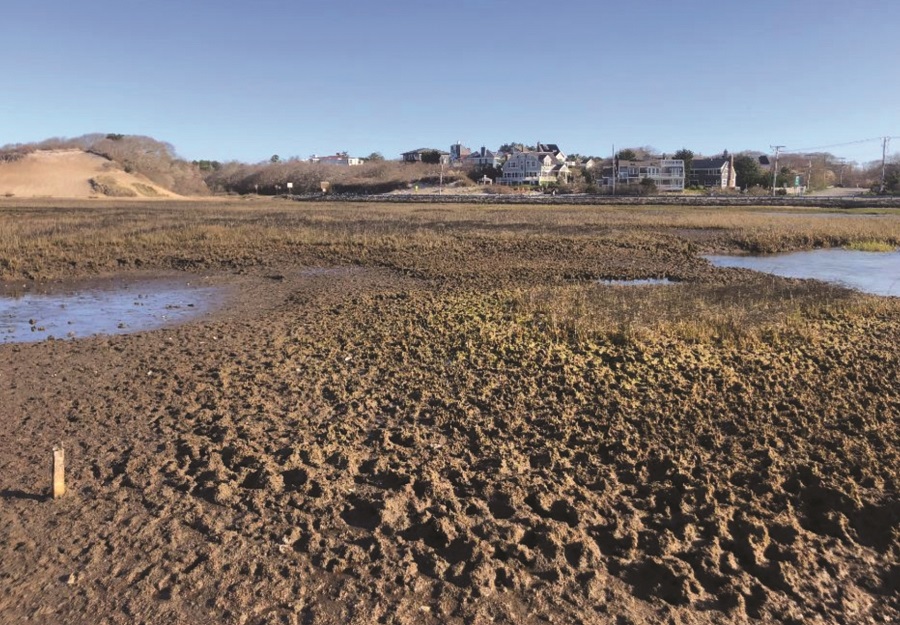
Peter Borelli, then the executive director of the Center for Coastal Studies, asked the select board to look into breaching the dike in 2006. The board asked the Army Corps of Engineers to do a feasibility study later that year, but the Corps said it did not have funding for such a project.
In 2010, the Army Corps told the select board there might be new funding opportunities, then retracted that advice the same year.
The same thing happened in 2013, according to emails between town staff and the Army Corps. Ultimately, the study began in January 2014 and was finished in December 2015.
A first presentation of the material to the select board in October 2016 went well, according to the Provincetown Banner.
But a follow-up public presentation by the Army Corps to members of the select board, harbor committee, and conservation commission was disastrous, according to Dennis Minsky, who was chair of the conservation commission at the time.
“It was the most unimpressive presentation I have ever seen by professionals,” Minsky said. “They were not prepared. They did not have answers to questions, especially about unintended consequences.”
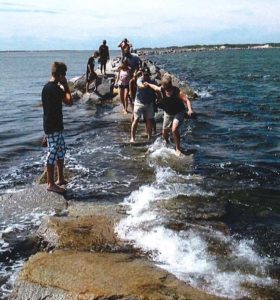
Residents at the meeting wanted to know how a gap in the dike would affect the town’s shellfish grants, Minsky said. The most likely location for the gap is where the waters are already deepest, near the midpoint of the dike, but that area is relatively close to the shellfish grants. The effects of a channelized flow there were not studied by the Army Corps.
There were also questions about whether the bridge over the gap would induce reckless behavior like diving or potentially harm swimmers or kayakers at high tide, Minsky said. Other people worried about stranded wildlife, coastal flooding, or an increased risk of a breach of the southern end of Herring Cove beach — which had happened in 1978 and again in 2019, Minsky said.
“The concerns were not limited to shellfish grant holders,” he said. “The presenters were deer in the headlights.”
By the town meeting vote on April 3, 2017, the conservation commission, select board, and harbor committee had all come out against the plan. It was discussed for only seven minutes before nearly everyone in the room voted to indefinitely postpone an article seeking $51,000 in funding for the final study — in effect, killing the project.
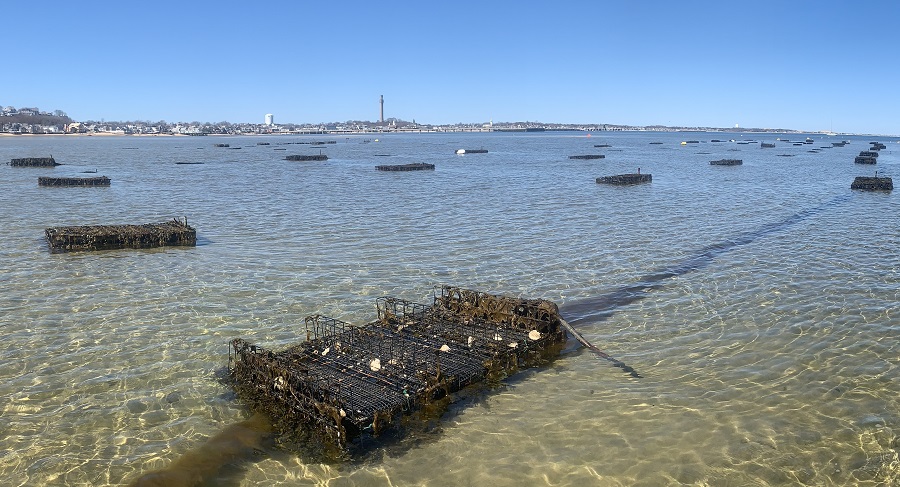
“I was chair of the conservation commission, and we had no inkling of the purple marsh crab at that time,” Minsky said. “There was no mention of marsh deterioration. All we had was this vague proposal to enhance flushing of the salt marsh.”
The December 2015 Army Corps report did not mention purple marsh crabs. But it argued that restoring large fish to the West End marsh “will help to control the populations of herbivores that may otherwise become out of balance in the marsh.”
Depriving a marsh of predators “can lead to dramatic declines in habitats brought about by the lack of control by predator species of marsh herbivores,” the report stated.
When that report was written in 2015, the retreat of the cordgrass marsh had not yet been discovered. The risks to the marsh were hypothetical. Now that the damage can be easily seen, town meeting voters will get to consider a possible solution again.



